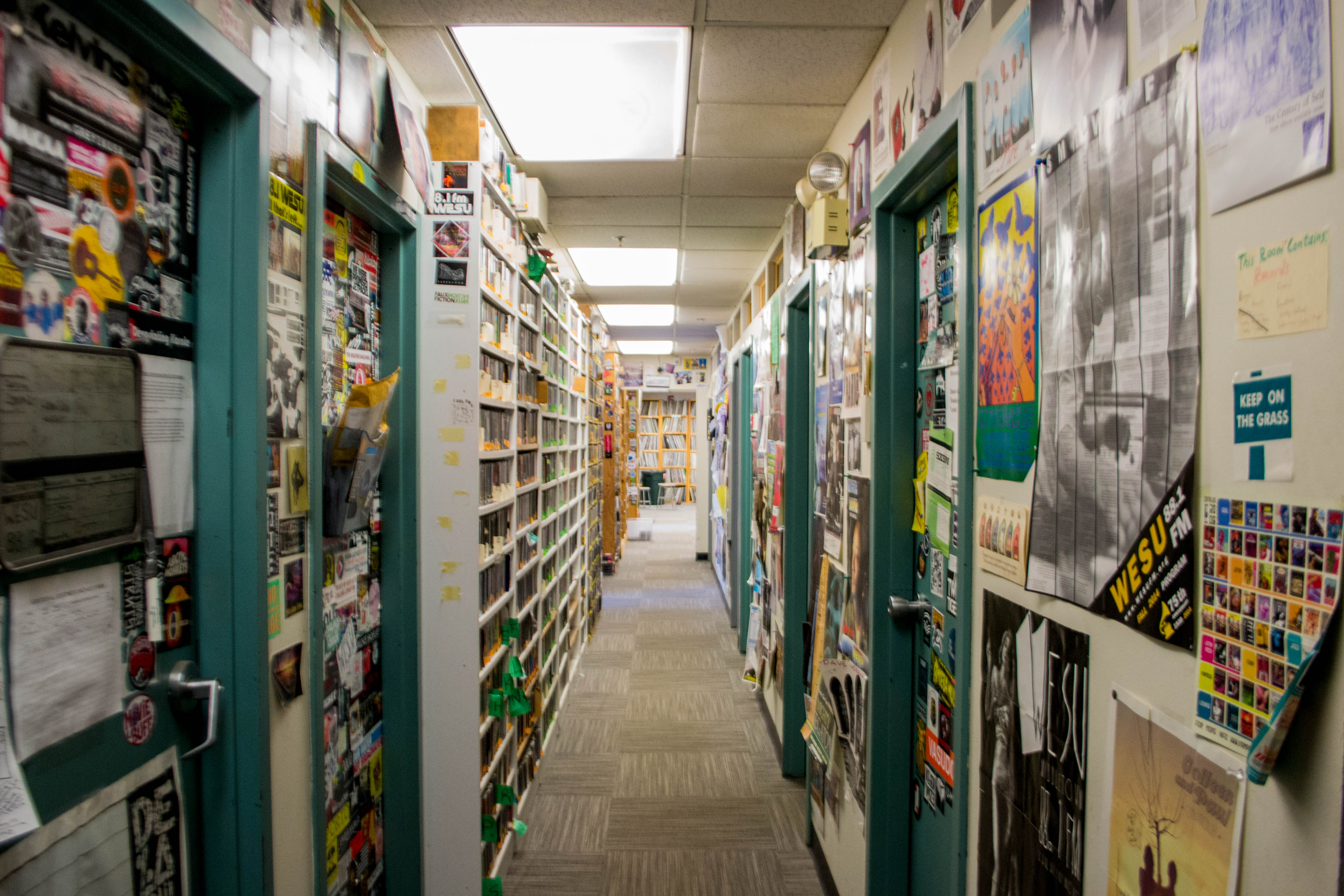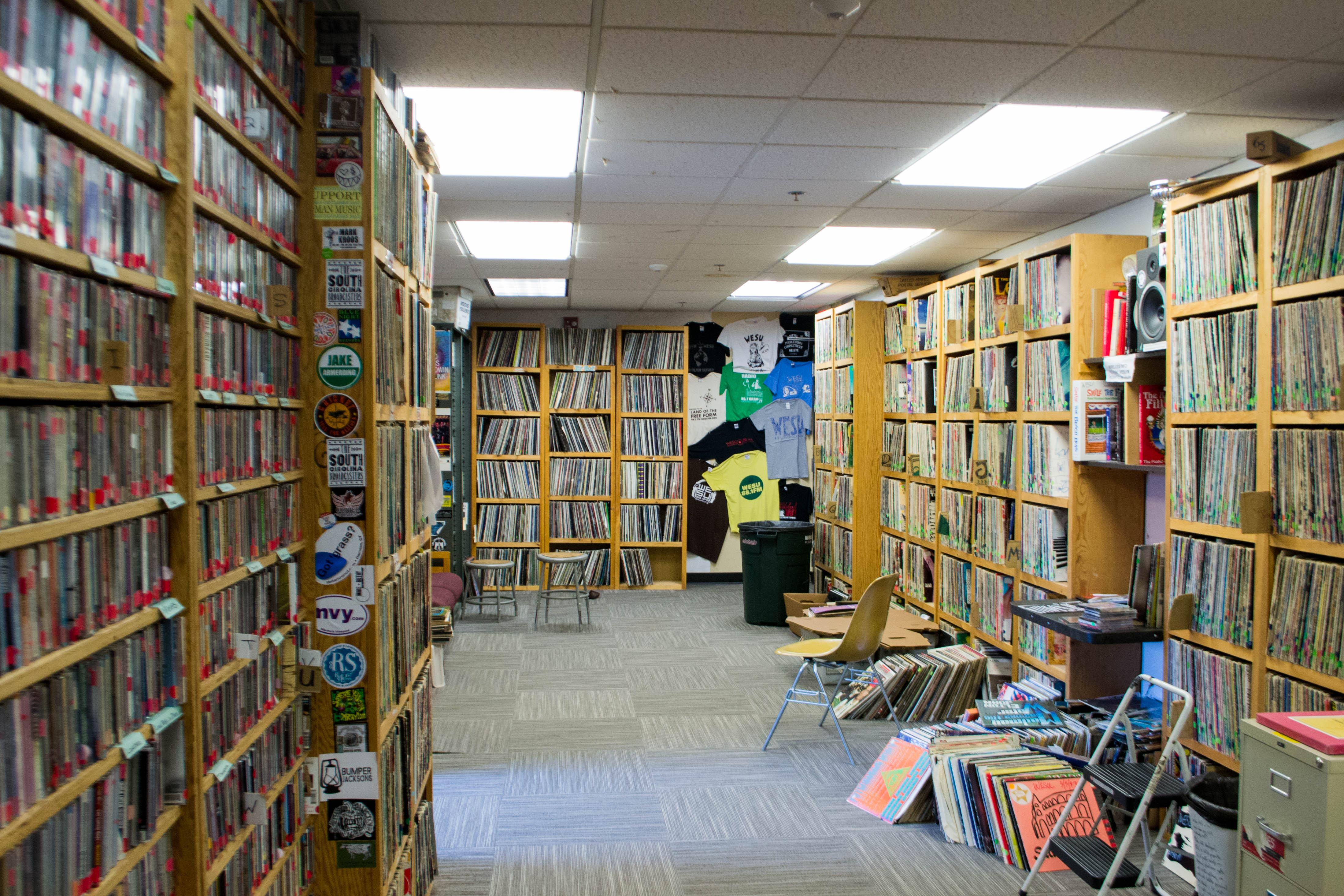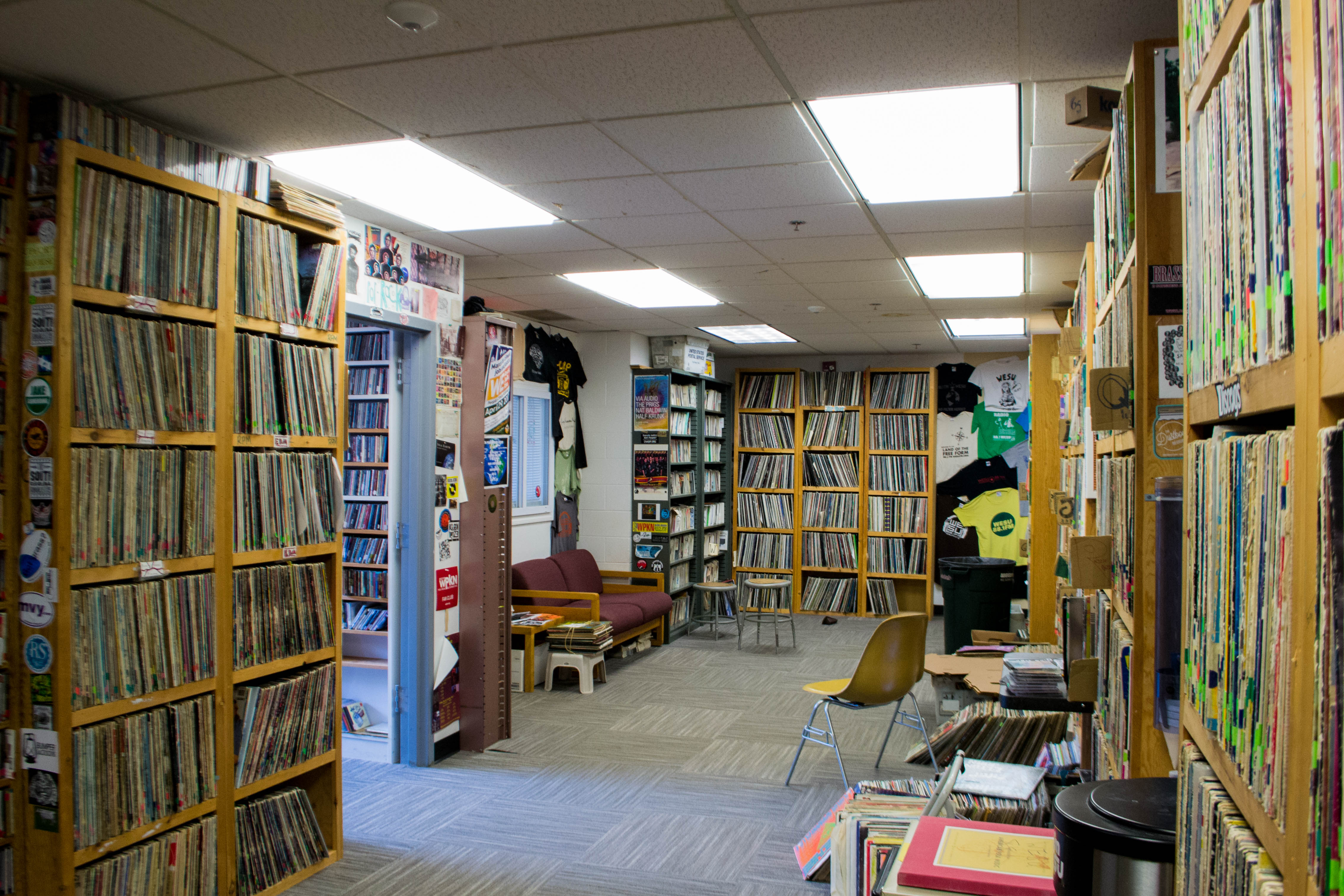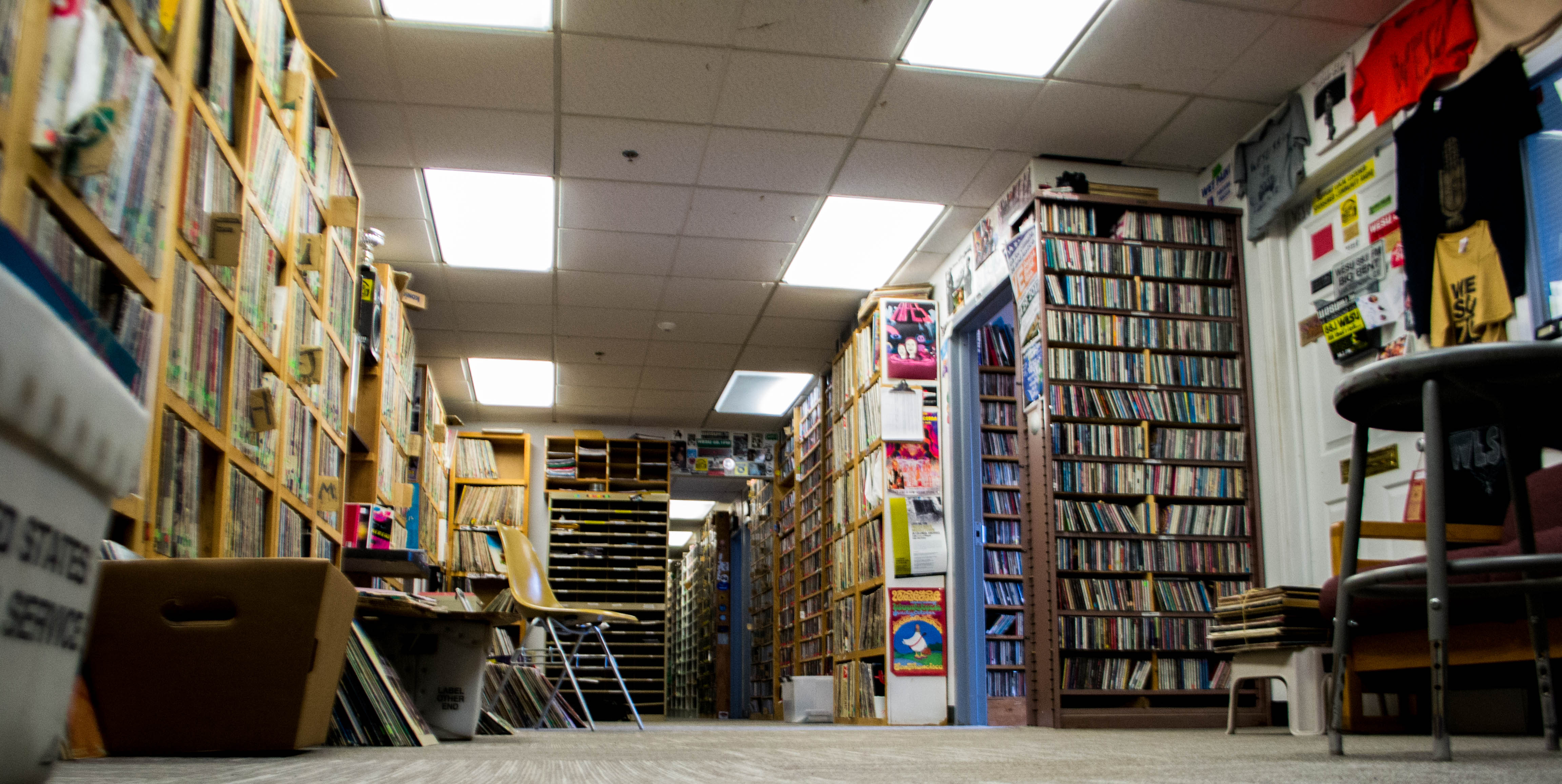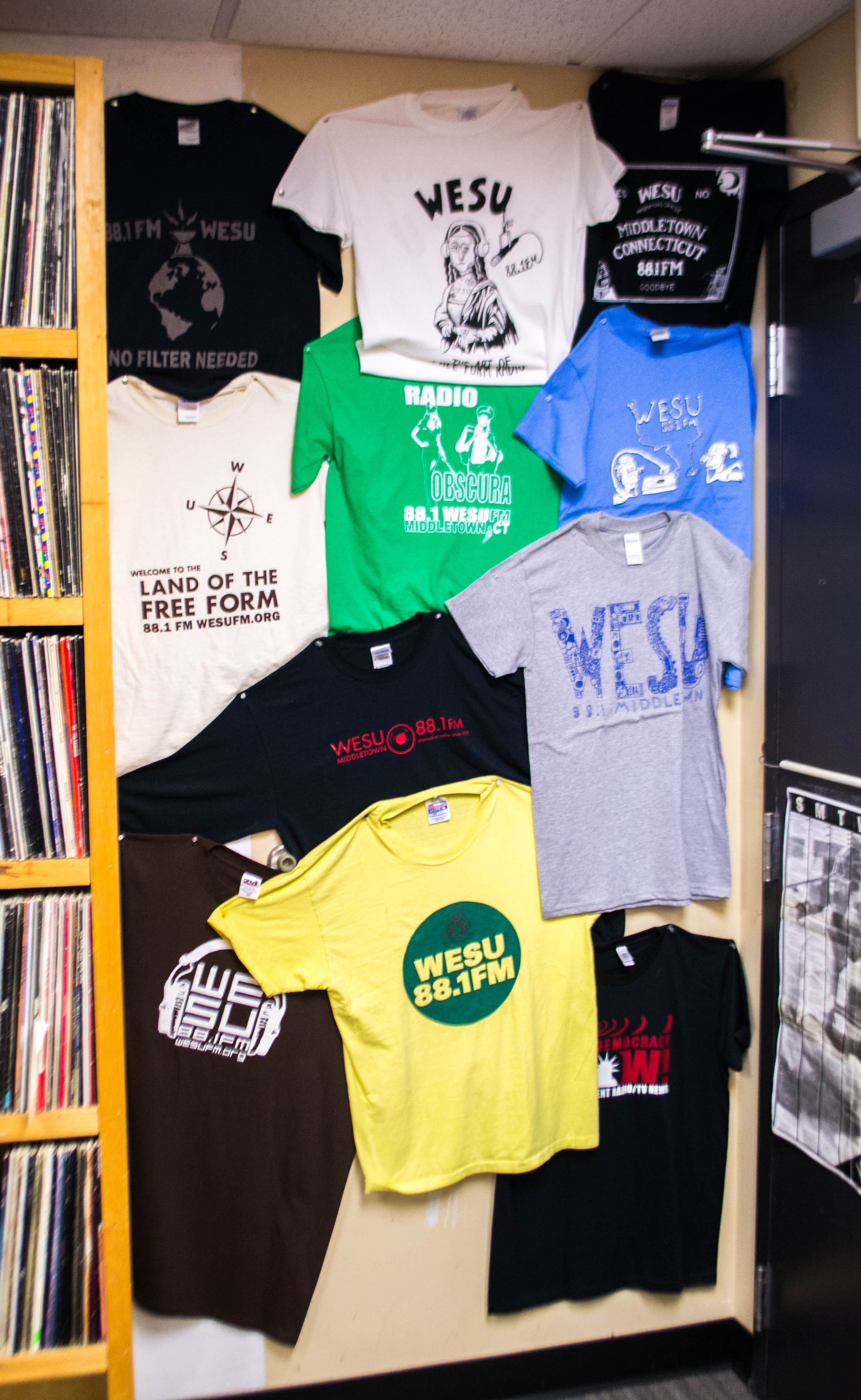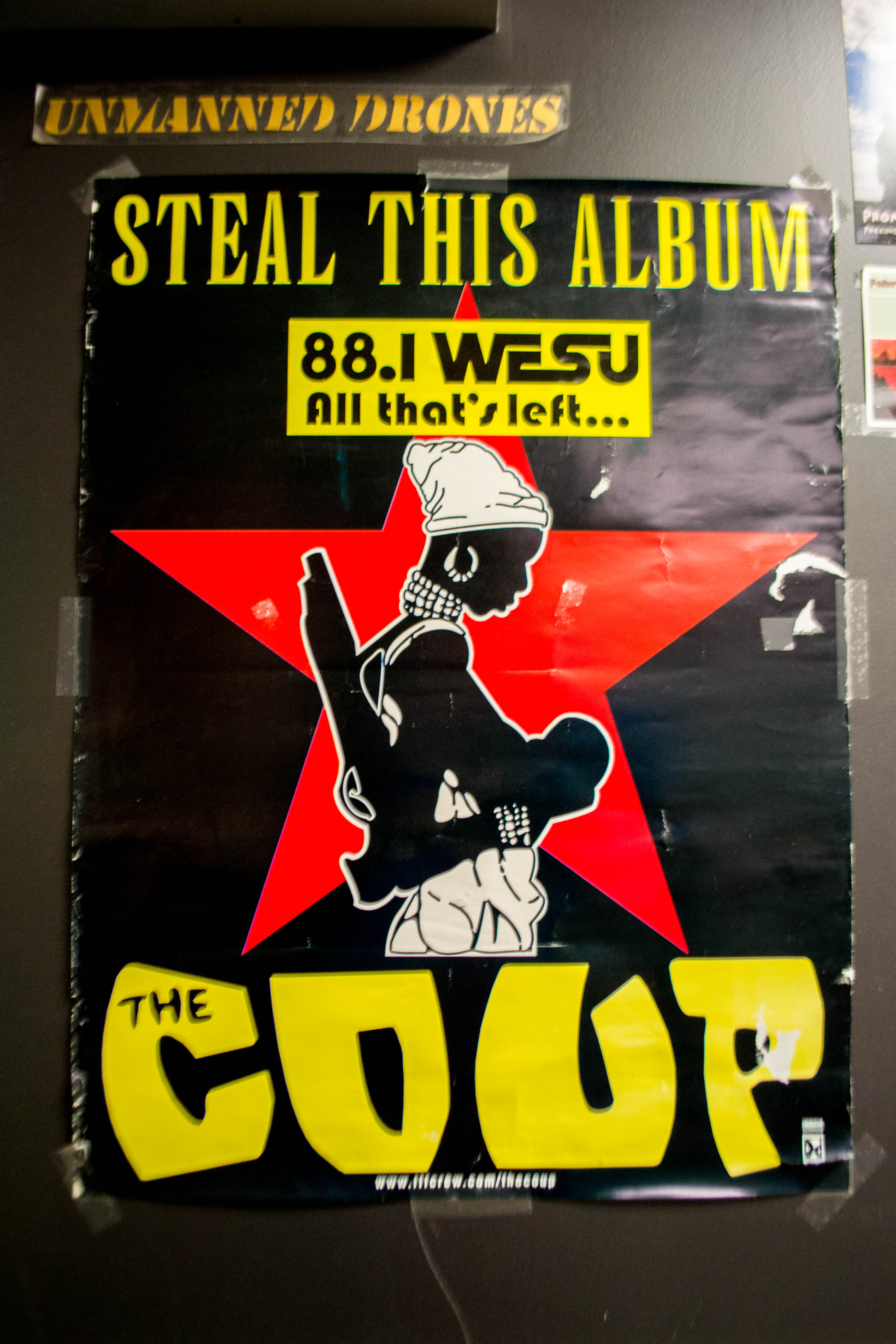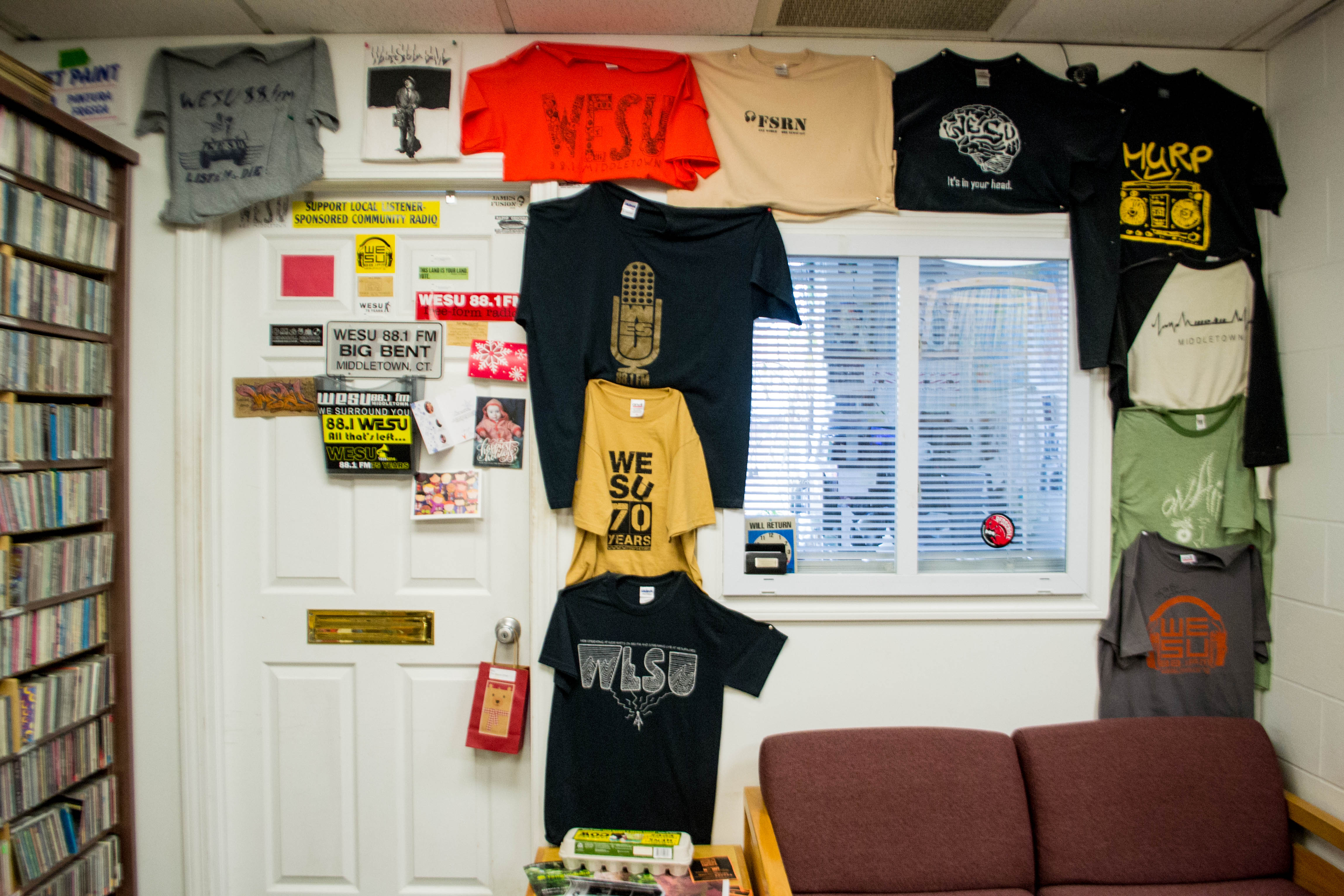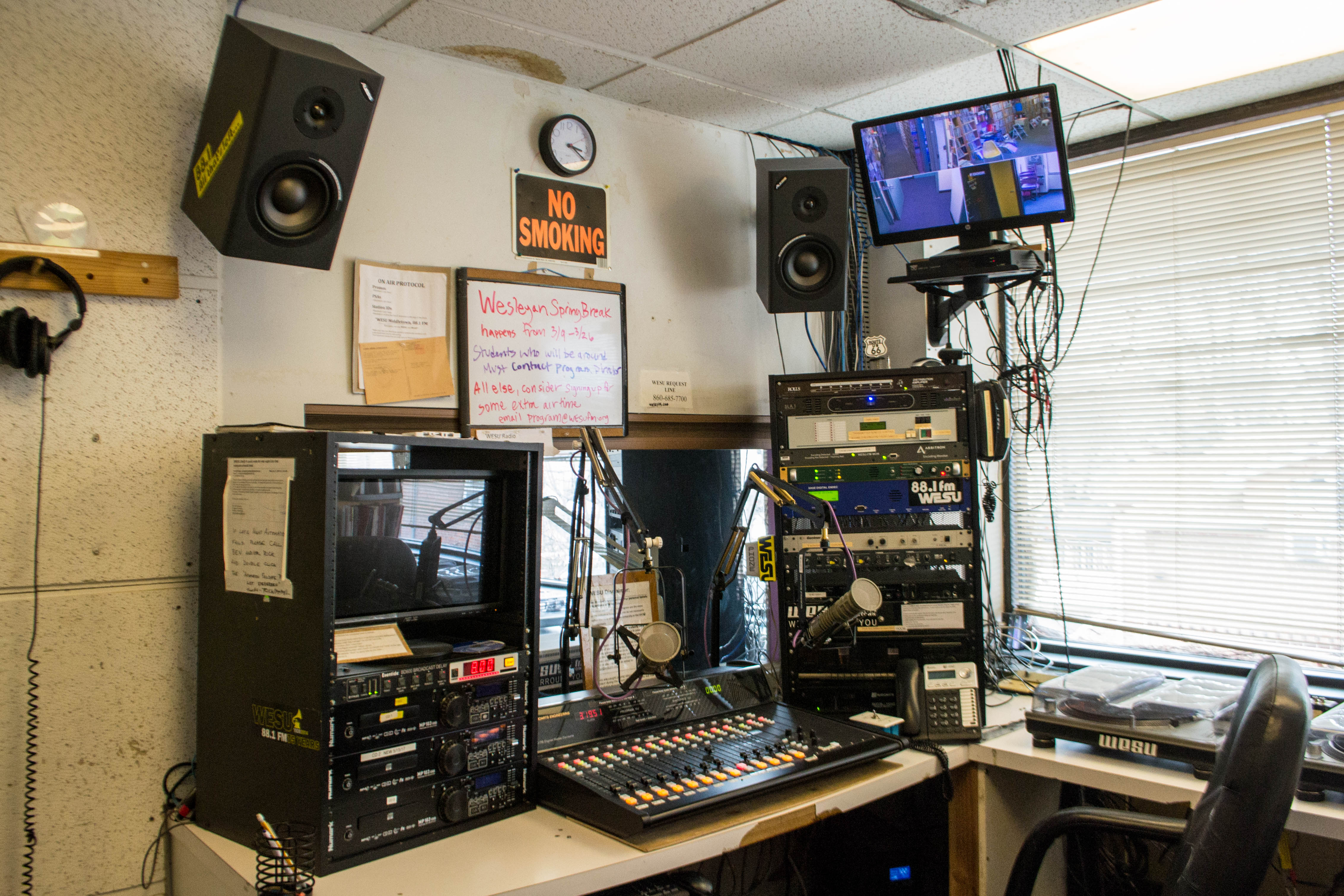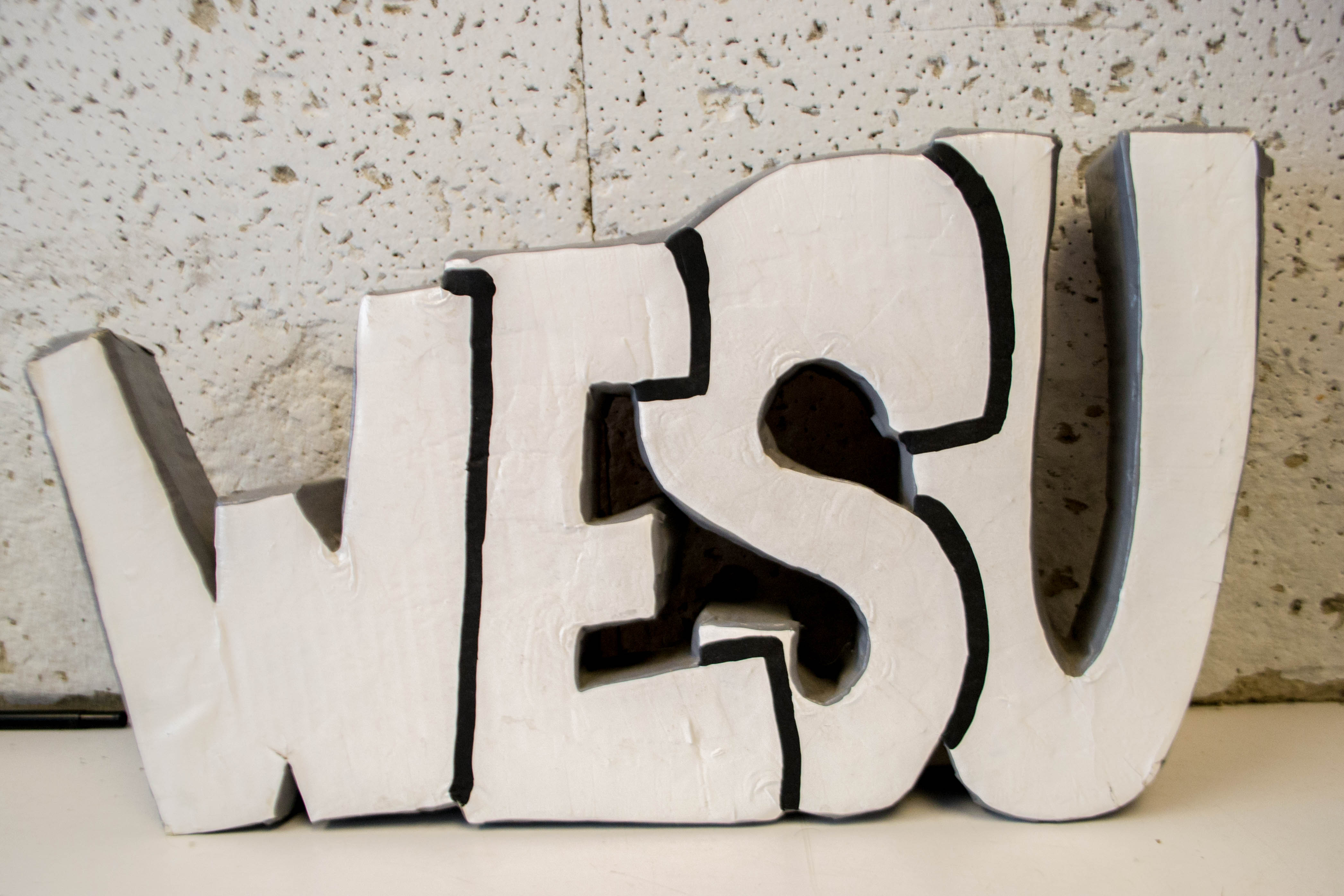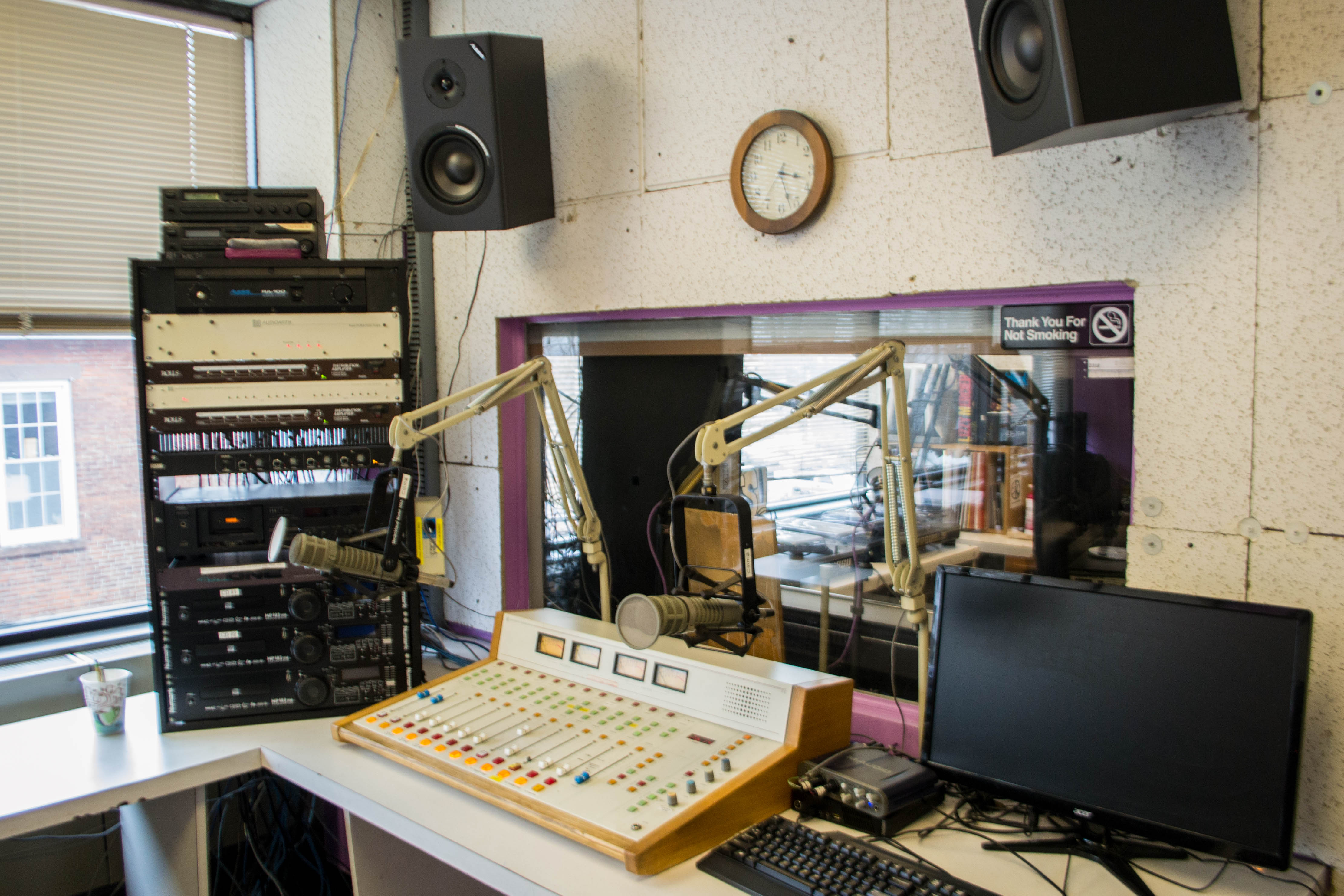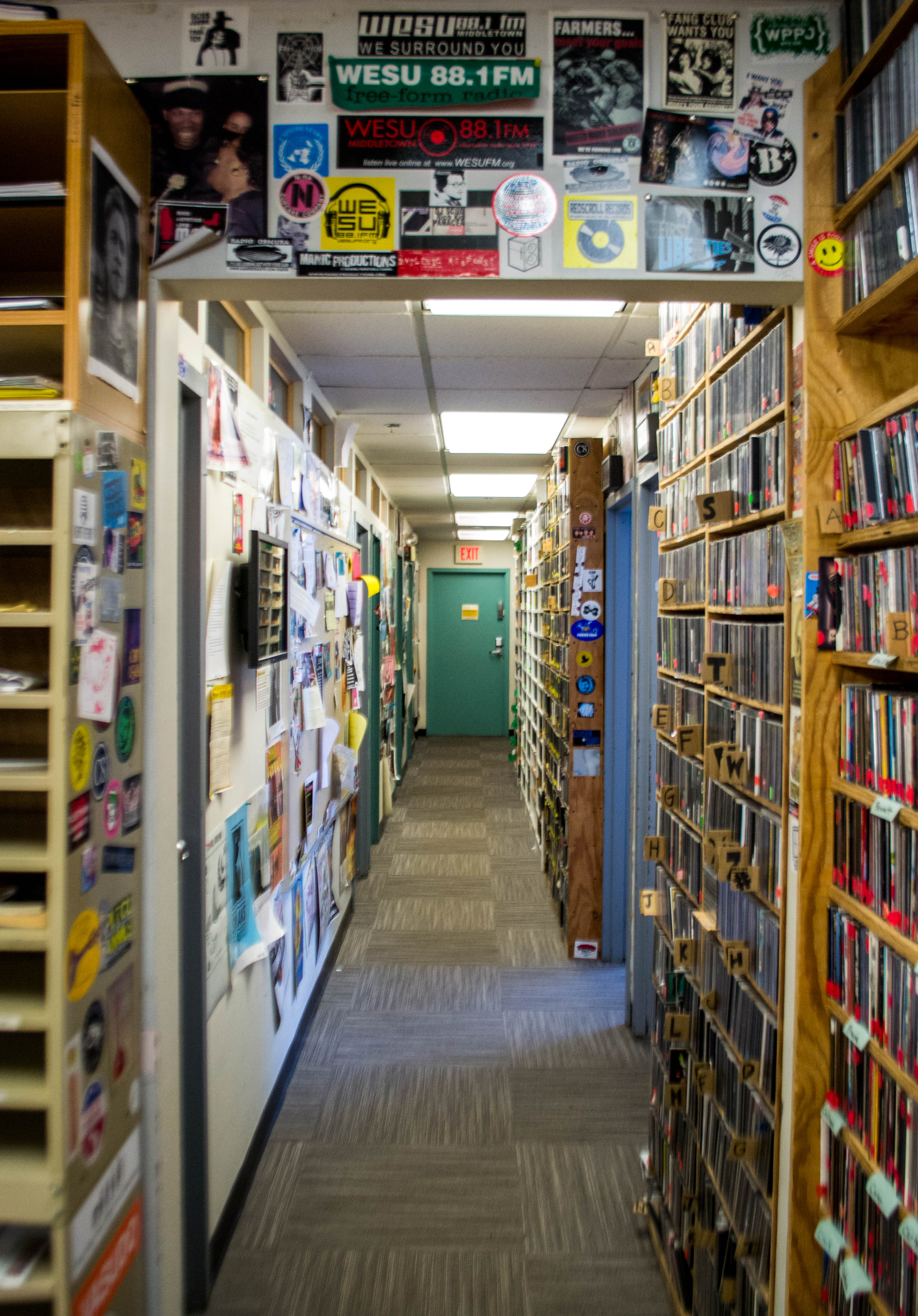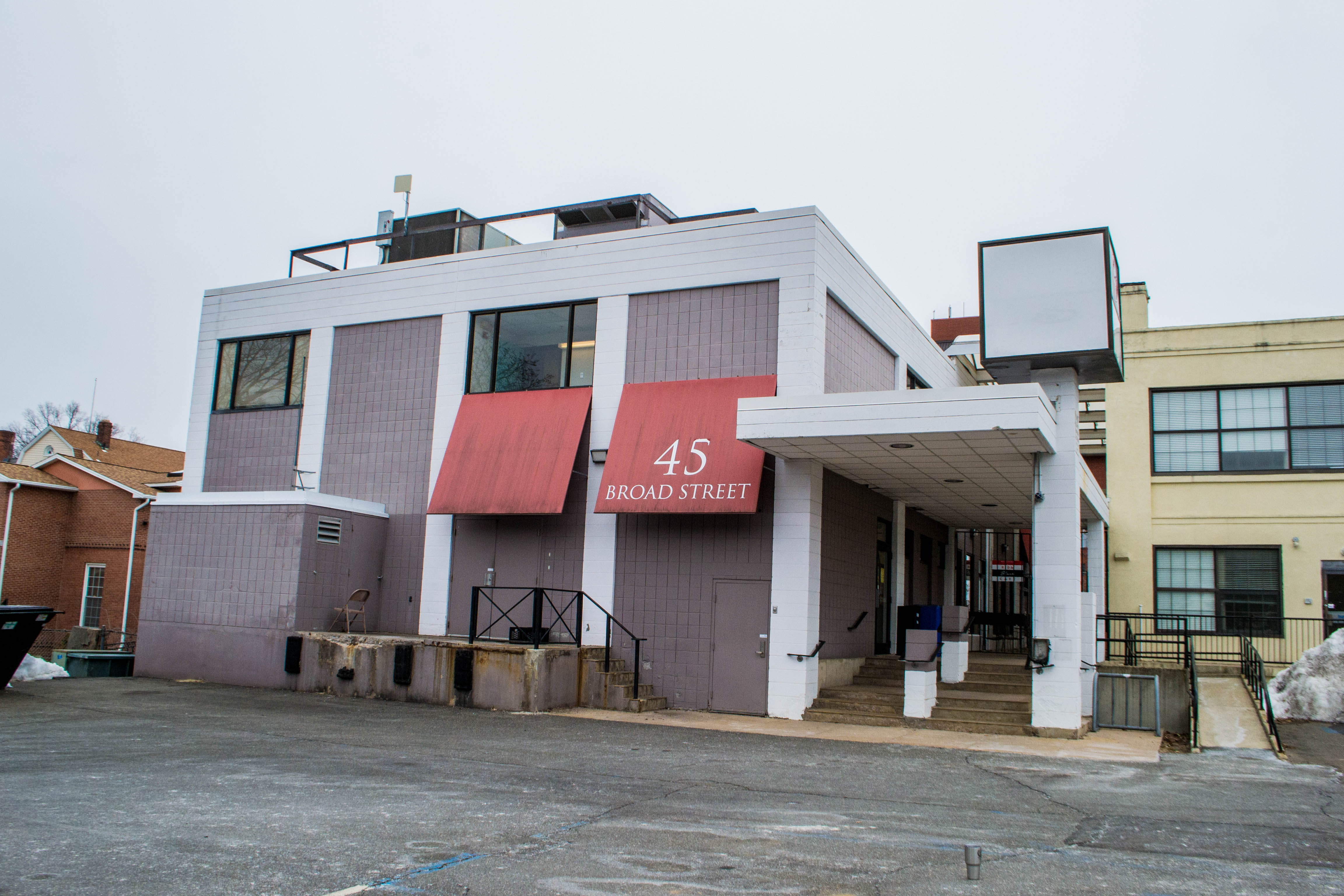About WESU
Station Gallery
Images copyright Cormac Chester
Mission Statement:
WESU, Middletown (WESU-FM) is a noncommercial, community/college radio station. WESU supports a wide variety of music genres and styles of
programming and is dedicated to exposing the listening audience to material generally absent from the airwaves. Our mission is to provide listeners with coverage of local affairs, opportunities for social and political engagement, and an eclectic mix of commercial-free music from within the community and around the globe. WESU serves Wesleyan University students and members of the greater Middletown area as an educational resource and outlet for creative expression, and is committed to furthering the interests of our local community.
Station History
A Brief, Informal, Probably Incomplete History of WESU:
- Mischievous Beginnings
- DIY Radio
- Independence and FM
- Arista Boycott
- Demise of the WBA
- The Move
- The License
- General Manager and NPR
- 2005 – Present
Introduction
During the negotiations regarding NPR programming, it became obvious to the board of WESU that the station was dangerously unaware of its own history. The attempts to pinpoint legal facts such as the ownership of the license and the transmitter unearthed the rich history of the country’s second oldest college radio station, a history of which even the board was unaware. The reconstruction of WESU’s archives has since become a major priority of the board in an attempt to revive the unique and eclectic identity that has defined the “WESU” call letters for over 60 years. To be a part of the WESU legacy is to be a part of college and independent radio history, and, to that end, this brief document is intended to convey WESU’s history as we best know it.
One last note before I begin: the reconstruction of the WESU archives is an ongoing process. There are still hundreds of pages of records that need to be organized, and still several records and documents that have not yet been found. As such, this history is not yet complete. Some of the stories contained within are anecdotal, and I will try to indicate which stories those are. Also, this document is by no means comprehensive. There are many more stories that, for one reason or another, were not crucial to this document, and are not included. So if you’re still interested, go and request the WESU file at Special Collections in Olin Library, or come track me down and get me talking. This radio station has always been a creative, experimental, outspoken place.
So, welcome to WESU.
-Evan Simko-Bednarski,
Archival Officer, 2005
President, 2005-2007
Mischievous Beginnings
When sophomore Arch Doty moved into room 23 of Clark Hall in September, 1939, he brought with him a radio transmitter he had built at home the previous summer. Using a turntable, 78 rpm records, a microphone, the transmitter, and an antenna wire hanging out of Arch’s window, student-run radio at Wesleyan hit the airwaves.
It was a modest start. The entire audience that tuned into the evening AM-band broadcasts was limited to Clark residents—the weak signal reached no farther than several hundred feet beyond the antenna. But the broadcasts proved to be very popular, and within weeks, students in other residences wanted to be able to tune in.
The only way to increase listenership was to extend the wire antenna.The Argus reported on October 16, 1939, that three (apparently self-appointed) student managers—Arch as technical director, Robert Stuart ’42 as operations manager, and George Strobridge ’41 as business manager—were seeking administration sanction to create a radio network at Wesleyan inspired by the one-of-a-kind station established by Brown University students in 1936 that used a wired network as a campus-wide antenna. If the board of trustees agreed, “the Cardinal Network of the Wesleyan Broadcasting System will go on the air with a regular series of programs for the undergraduates of this college.” There is no record that the trustees took up the matter, but at Arch’s invitation, President James McConaughy inspected the nascent operation, and on November 2, The Argus announced that he had given his approval.
To get ready for the station’s upcoming formal debut, the students built a small studio and made technical improvements in a Clark basement space given to them by the administration. Hundreds of feet of wire were run among the existing cabling in the underground steam tunnels that connected Clark through Olin Library to two other buildings—Harriman Hall and North College—that were dorms at the time. As long as a radio was within range of the wire, it would pick up the signal just like that of any other AM station. The student managers funded the entire enterprise out of their own pockets to the tune of $250 (about $4,200 today).
On November 9, 1939, at 8 p.m., radio station WES, as it was called prior to 1949, made its first official broadcast. It hasn’t been recorded what the first words were, but The Argus reported that the program opened with football captain Bob Murray ’40 speaking with cheerleader Dick Landsman ’41 about the upcoming Williams game. Then, football coach Jack Blott provided remarks about the game. President McConaughy followed with a 20-minute welcoming address (“Mr. Station Manager, Mr. Announcer, thank you for this privilege—cordial congratulations and good wishes”). Rounding out the broadcast, the Paint and Powder Club presented two scenes from their current production, Bury the Dead.
Do-It-Yourself Radio
Once the station was officially recognized, it quickly became a popular student group. The early radio pioneers began construction of a legitimate studio in the basement of Clark Hall. Paying mostly out of pocket, the early members of WES purchased studio equipment piece by piece, slowly constructing an elaborate headquarters. Soon after the anecdotal story above, the station switched to a more powerful broadcast with an aerial antenna. This antenna was located on the top of the Wesleyan Science building, connected to the station by wires running through the maintenance tunnels.
In 1950, revision of the FCC’s rules necessitated four letter callsigns, and WES became WESU.
Independence and FM
In the period of time after the construction of the Clark studios, WESU became popular with the surrounding community. They broadcast high school football games, and the news department covered the Middletown mayoral elections. WESU was quickly establishing itself as a community voice and resource, in addition to gaining popularity on campus. In the late 60’s, the new technology of FM broadcast became a possibility for WESU. At the same time, the Federal Communications Commission was establishing new rules for college radio stations. In light of these things, the board of WESU decided to reevaluate the station as a whole. They decided to adopt FM broadcast, and to begin negotiations with the Wesleyan Board of Trustees to privately incorporate and maintain control of the station. Both of these initiatives succeeded, and in 1967, the Wesleyan Broadcast Association (WBA) was created as a 501c3 non-profit incorporation. It’s board consisted of students and one dean—the latter had only advisory powers and no vote with regard to the station’s decisions. By 1968, the Section 10 educational FM license (at 88.1mhz), as well as all equipment and funds related to the station, was transferred to the WBA. The WBA was also exempt from all rent for the Clark Hall property. The Section 10 FM license necessitated that the station be non-profit, so for the first time in its history, the station could not allow advertisement on its airwaves. Funding thus became dependent on the Wesleyan student government.
The Arista Boycott
By the late 70’s, WESU had established itself as a home of eclectic music and the enemy of the Top 40. For those of you new to radio, it’s common practice for record labels to give free promotional copies of their newest releases to radio stations in return for airplay (this is mediated by your friendly Music Director). In 1980, Arista Records responded to financial trouble in the record industry by revoking its free subscription service to any college radio station. WESU was enraged, and then-Music-Director Alex Crippen declared a boycott of Arista Records. The announcement was published in a few college radio journals, and soon, many other stations around the country joined it. The boycott lasted for a year, until Arista started threatening legal action against larger, university-controlled stations, claiming that calls-to-action regarding the boycott, broadcast over the airwaves, were illegal. The validity of these claims was never tested, as the universities behind these larger stations urged the broadcasters to back out. The WESU inspired resistance was thus short-lived.
The Demise of the WBA
The 80’s and 90’s were a time of great freedom on WESU. Eclectic music became more and more a part of the station’s identity; community members became a more important part of the station, filling DJ positions and eventually certain positions on the board; and in 1988, block programming was dropped in favor of Free Form programming, after the model of stations like WFMU in New Jersey. More people than ever were free to be a part of WESU, and there were fewer restrictions on the kind of shows they could produce. But at the same time, the organizational side of the station was beginning to unravel. The position of the faculty advisor had long ago passed into obscurity, and though the station had managed quite well on its own, a series of events put the station in a tenuous financial position. In 1986, the transmitter unexpectedly began to falter, and quickly became too unreliable for constant use. The Wesleyan Administration loaned the station money for a new transmitter, but at a high rate of interest. The Student Government, sympathizing with the station, absorbed most of this interest, but the cost to the station was still about $30,000 spread out over several years—more than its full annual operating budget at the time. In 1990, for reasons that are still uncertain, the WBA went under, and the station was no longer independent. WESU was plunged into organizational turmoil as it tried to rebuild its financial base.
The board, however, being primarily a student board, had a four-year turnover of its membership. Thus by 1995, the station was completely unaware of its tenuous organizational status.
The Move
In 1999, Wesleyan University decided to commence its long-overdue renovation of Clark Hall. For about a decade, it had been in communication with WESU, trying to locate another comparable space for the station’s studios, but all of these conversations had been inconclusive. In the spring of 2000, the university gave the station all of ten days notice that it was being moved to its present location at 45 Broad Street, to a studio half the size of the Clark Hall location. The move was hasty, and the station lost a good deal of music and a lot of its archived records and documents. The station is still recovering from the move as I write. The archival project is but one facet thereof.
The License
In 2003, President Doug Bennet of Wesleyan University entered into negotiations with WESU’s board to acquire the license to 88.1. The reasoning was that the university was a far more stable institution financially, and could ensure greater safety for the license.
The General Manager and NPR
In 2004, the board decided that the best way to solidify its organizational structure was to attend to the four-year turnover. This would require the creation of a salaried General Manager position, a person who could make a long-term commitment to stay with the station, and serve as a resource for the board, conveying experience and station history from year to year, as well as attending to the daily workings of the station. The university was approached to financially assist the station in creating this position, and in 2005, the university, as license holder, decided that the best way to do this was through simulcasting the shows of nearby NPR affiliate WSHU, thus receiving a cut of WSHU’s fundraising. The university, in return for facilitating the General Manager position, necessitated that the board of directors become all-student.
The community members who were thus removed from the board created a 501c3 non-profit organization called the Friends of WESU, which serves as a community run fundraising body, as well as the station’s summertime board of directors. The student board, for its part, was reorganized to include archival and fundraising positions.
2005-Present
2005-2006
WESU has grown a lot in the past year. We held our first substantial on-air pledge drive last year and instituted a successful underwriting program making a very substantial step towards financial stability and independence. Through negotiations with the university, we have won the right to once again have Community Volunteers serve on our Board, a board that has again been reorganized to better handle the new systems and needs that have come about with our relationship to WSHU and our attempts at financial and organizational stability and independence.
2006-2007
WESU continues to move forward with over 100 student and community volunteers currently on air. Volunteers broadcast during the evenings and on weekends in addition to the robust public affairs programming WESU offers during the days M-F.
WESU become an official affiliate to Pacifica Radio, the nation’s oldest public radio network. Through this affiliation WESU has access to Pacifica’s renowned public radio archives and many other high quality public affairs programming.
In December 2006 WESU raised almost $20,000 in listener pledges during the 2nd Annual Winter Holiday Pledge Drive. For the second Year in a row according to the Hartford Advocates Readers Poll WESU is the 3rd most listened to College radio station in the Hartford area.
By the end of the 2006 Fiscal year WESU managed to negotiate funding from the University for a new, part time “production assistant” to help the GM. This position will relieve the GM of some of the day to day production responsibilities enabling the GM to focus more on the development of WESU (and take a vacation). The position should be in place by the beginning of the Fall 2007 academic year.
WESU said goodbye to Wesleyan’s 15th President, Doug Bennet. Bennet’s interest in WESU has been controversial to say the least. Many resented the change he encouraged with the implementation of NPR programming in 2004 while others applaud the quality and consistency in programming that resulted from this new relationship.
2007-2008
As WESU continued to grow, several important initiatives were undertaken to ensure the development of the station as we approached our 70th anniversary. For our 2007 pledge drive, WESU raised over $20,000 in listener support, a first for the station. We also expanded programming to include more programs that connect WESU to the Wesleyan experience more intimately. Training has been expanded and improved and began to accommodate more than forty students and community volunteers per semester. Programs such as Indigenous Politics and The Wesleyan Report–which featured interviews, lectures and Wesleyan Argus stories on the airwaves–connected WESU more than ever with the faculty and student community on campus, providing a valuable resource for the University and the central Connecticut region, as well as our online listeners. The Middletown Youth Radio Project ran daily workshops for Middletown youth itching to try their hands at every element that goes into producing a radio program. These initiatives and others marked the active and vibrant community of WESU.
As we eyed our 70th anniversary (2009), we made steady progress on a potential transmitter upgrade that would boost our signal from 1500 watts ERP to 6000 watts ERP. This increase in power would have effectively doubled our potential listening population in CT to close to one million.
At this point we have accomplished much of the preliminary work to bring this power increase to fruition. In April 2008 WESU was granted a construction permit by the FCC to carry out this project and our partner stattion WSHU, in Fairfield CT, recently donated a 1960s analog Gates transmitter capable of boosting our power to 6,000 watts ERP. The completion of this project will become a reality when we can raise roughly the $15,000-$20,000 above our annual operating budget to cover the design, purchase, and installation of a new antenna to cary our signal.
On the eve of our 70th Anniversary, nothing was to be more fitting to mark the storied birth of our station than to move us forward by reaching more listeners in the central Connecticut region. It was our goal to complete this power upgrade in early 2009.
